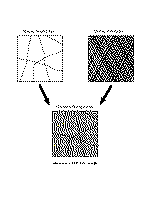Undersea Terrain Elevation (Bathymetry)
- in general, unlike terrestrial elevation data, undersea data points tend
to not lie on regular grids, and tend to be much denser near landmasses
Where to get it
- NOS
DataExplorer
(part of NOAA)
- a portal for images and data from a number of U.S. National Ocean Service (NOS)
offices
- The NGDC (National Geophysical
Data Center) has data
- specifically under
Bathymetry,
including
Multibeam Bathymetry
- Coastal
Relief Model has 3 arc-second (~60-90m) data
- their
TerrainBase CD-ROM includes:
- 5-minute global DTM, 30-second
grids for smaller areas
- unfortunately, the data is split into multiple files, all with
weird formats
- ETOPO1
is a 1-minute (~1.8km) global dataset which can be downloaded freely
- the data is noisy, rough, and patchy, but it's also (as of
2009) the best freely available global bathymetry set
- see a comparison of ETOPO1 to
other datasets
- older, lower-resolution versions (ETOPO2, ETOPO5) were
superseded by ETOPO1 in 2009
- Global
Seafloor Topography from Satellite Altimetry has images, but not
data
- General Bathymetric Chart
of the Oceans (GEBCO)
- a global bathymetry grid at 1-minute (~1.8km) resolution
- although the data is supposedly public, for years it cost
£230/£100 for delivery on CDROM
- as of 2008, it does appear to be actually
downloadable
from BODC, registration required
- Tried out their "free sample" download for a 20x20-min area. It
looks very smooth, as if highly filtered.
Compared to the contemporary ETOPO2 dataset, GEBCO
appears to be actually less detailed despite being higher precision and
less noisy.
- There are some different viewpoints and interesting history on the GEBCO data. A series of
postings from the GMT mailing list by Walter Smith (of
the Smith&Sandwell altimetry-based bathymetry dataset):
post1,
post2
- Ocean Floor Databases at
LDEO (Columbia University)
- RIDGE Multibeam Synthesis Project (Multibeam Bathymetry)
- formats: .CDF and .HDF (see below)
- Geological Data Center (GDC) at
SIO (Scripps Institution of
Oceanography, UCSD)
- their ocean floor data is referred to as "u/w" for "underway"
- has collected and made available bathymetry from many cruises over
the years, although it is very difficult and confusing to find actual
data on their site
- CleanTOPO2
- a touched up and generalized version of
SRTM30 Plus, global combined sea floor and land elevation data

- specifically, the artifacts remaining from the 1997
Smith and Sandwell bathymetry have been manually "cleaned up", with
a more visually appealing result
- if you can't find any digital data, it may be possible to acquire
nautical charts and digitize the contours
- Imray is a major publisher of
Nautical Books and Charts; you can buy charts of Europe, the
Mediterranean and the Caribbean
- at least one VTP user has taken this approach, modelling the Islands
of Greece
File Formats
- bathymetry is sometimes available in the same
DEM
formats as above-sea elevation, although more commonly it is not
- CDF
- developed at the NASA Space Science Data Center at Goddard, and is
freely available
- was originally a FORTRAN interface for scientific data access
- netCDF
- Unidata re-implemented the library and designed the CDL (network
Common Dataform Language) text representation for netCDF data
- CDF and netCDF have evolved independently, and they are not
compatible
- the public-domain UNIX package
GMT can handle netCDF by
using the NetCDF
Library
- when a bathymetry CDF (netCDF) is encountered, it:
- has a 1468 byte header containing a descriptive title, any
additional comments, units of the x, y, z, dimensions, number of
nodes in the x, y dimensions, minimum and maximum values of x, y, z,
node spacing in the x, y directions, a scale factor, and offset
- the grid array is IEEE 32-bit floating point numbers, consisting
of sequential rows from top to bottom. Each row contains values from
left to right.
- HDF
- an extensible data format for self-describing files, developed by
NCSA, freely available
- consists of three arrays containing:
- the depths for each grid node (32-bit IEEE floating point
numbers)
- an image of the grid (8-bit unsigned characters)
- a color palette
- a netCDF interface to HDF exists
Other developments
- Seabed
Visualization
page
- by Paul Chapman, research engineer at Sonar Research & Development
Ltd, UK
- their goal is "real-time computer modelling and visualization of
underwater data."
- Davy Jones Locker
- a good site for material about the confluence of GIS and
oceanography, by Dr. Dawn Wright of OSU
-
 Global
Bathymetric Prediction for Ocean Modelling and Marine Geophysics
Global
Bathymetric Prediction for Ocean Modelling and Marine Geophysics
- they are constructing a complete bathymetric map of the oceans at a
3-10 km resolution by combining all of the available
depth soundings collected over the past 30 years with high resolution
marine
gravity information provided by the Geosat, ERS-1/2, and
Topex/Poseidon altimeters


